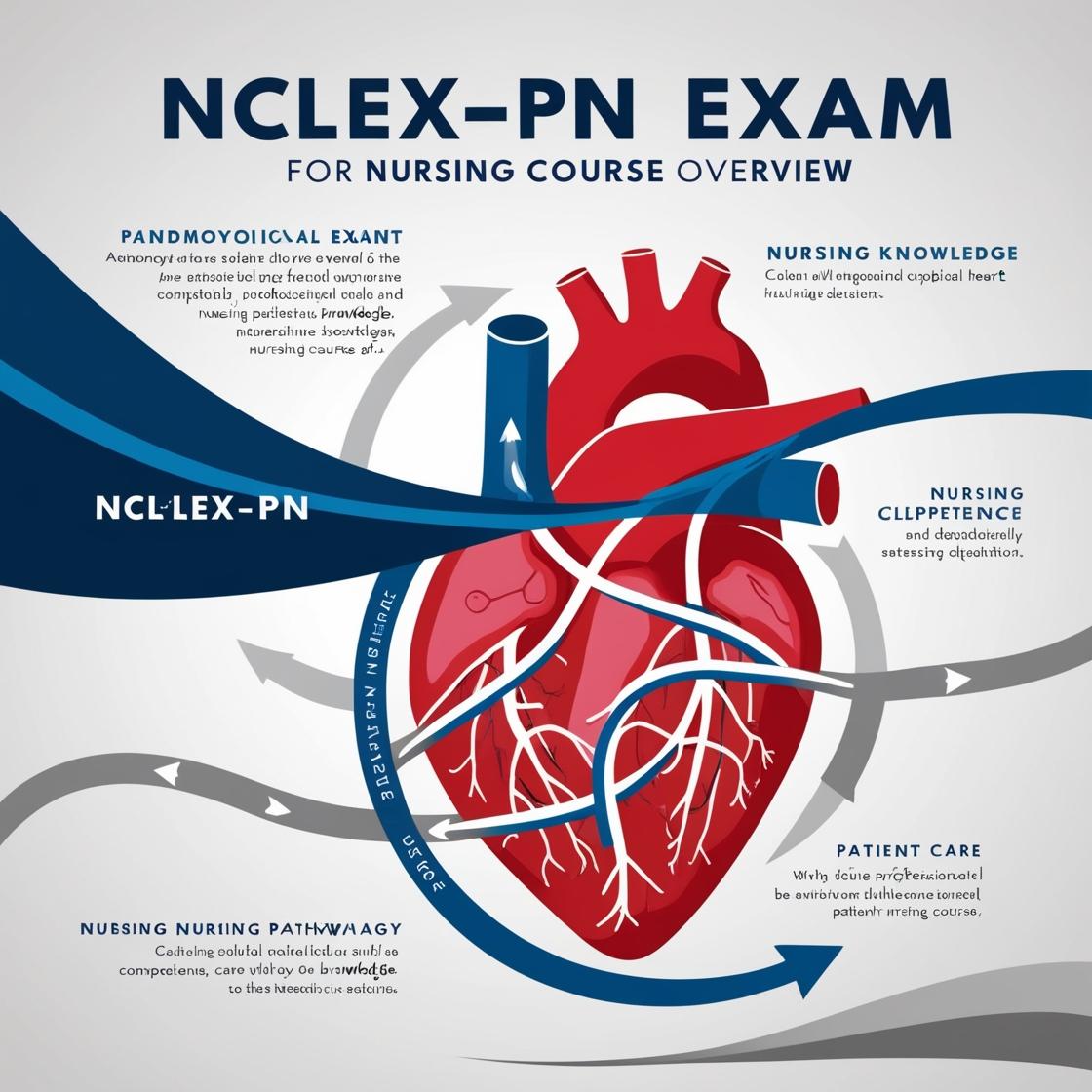NCLEX-PN
NCLEX PN Exam Cram
1. When placing an IV line in a patient with active TB and HIV, which safety equipment should the nurse wear?
- A. Sterile gloves, mask, and goggles
- B. Surgical cap, gloves, mask, and proper shoewear
- C. Double gloves, gown, and mask
- D. Goggles, mask, gloves, and gown
Correct answer: D
Rationale: When dealing with a patient with active TB and HIV, the nurse should wear goggles, a mask, gloves, and a gown to protect themselves from potential exposure to infectious agents through respiratory secretions or blood. Surgical cap and proper shoewear are not specifically required for this procedure, making option B incorrect. Double gloving is not necessary in this scenario, hence option C is incorrect. Therefore, the correct choice is D as it includes all the essential protective equipment for this situation.
2. Which of the following procedures describes an opening between the colon and abdominal wall?
- A. ileostomy
- B. jejunostomy
- C. colostomy
- D. cecostomy
Correct answer: C
Rationale: A colostomy is an opening between the colon and abdominal wall. An ileostomy is an opening between the ileum and abdominal wall, not the colon. Jejunostomy is an opening between the jejunum and abdominal wall, and cecostomy is an opening into the cecum. The term 'colostomy' specifically refers to the surgical procedure where a part of the colon is brought through the abdominal wall to create a stoma, allowing feces to leave the body. Therefore, the correct answer is colostomy as it accurately describes the opening between the colon and the abdominal wall, distinct from the other options.
3. A nurse is weighing a breastfed 6-month-old infant who has been brought to the pediatrician's office for a scheduled visit. The infant's weight at birth was 6 lb 8 oz. The nurse notes that the infant now weighs 13 lb. What action should the nurse take?
- A. Tell the mother to decrease the daily number of feedings because the weight gain is excessive.
- B. Tell the mother that the infant's weight is increasing as expected.
- C. Tell the mother that the infant should continue with breast milk as the weight gain is adequate.
- D. Tell the mother that semisolid foods should not be introduced until the infant's weight stabilizes.
Correct answer: B
Rationale: The correct answer is to inform the mother that the infant's weight gain is normal. Infants typically double their birth weight by 6 months, which is precisely the case here, with the infant's weight increasing from 6 lb 8 oz to 13 lb. This weight gain indicates healthy growth and development. Therefore, there is no need to decrease feedings. The infant should continue with breast milk as it is providing adequate nutrition. Additionally, introducing semisolid foods is usually recommended between 4 and 6 months of age, so there is no indication to delay based on the infant's weight gain.
4. Which of the following situations requires nurse intervention?
- A. A certified nursing assistant states, 'The patient in 307 is not wearing gloves while shaving her legs.'
- B. A nursing assistant at the nursing station states, 'The patient in 307 has a respiratory rate of 16.'
- C. A nursing student in the cafeteria states, 'Dr. Jones told the patient in room 307 that she was going to die.'
- D. A certified nursing assistant states, 'Dr. Jones hasn't made rounds this morning.'
Correct answer: C
Rationale: The correct answer is C. Patient confidentiality must be maintained at all times to respect the patient's privacy and dignity. Disclosing sensitive information like a patient's prognosis in a public setting violates confidentiality and can cause distress. The nurse should intervene in this situation and educate the nursing student about the importance of not discussing confidential patient information in public. Choices A, B, and D do not involve breaching patient confidentiality and do not require immediate nurse intervention. Choice A focuses on infection control measures, choice B relates to clinical assessment, and choice D is about the doctor's rounds, which are not urgent matters requiring immediate intervention.
5. A 46-year-old has returned from a heart catheterization and wants to get up to start walking 3 hours after the procedure. The nurse should:
- A. Tell the patient to remain with the leg straight for at least another hour and check the chart for activity orders.
- B. Allow the patient to begin limited ambulation with assistance.
- C. Recommend a physical therapy consultation for ambulation.
- D. Tell the patient to remain with the leg straight for another 6 hours and check the chart for activity orders.
Correct answer: A
Rationale: The correct answer is to tell the patient to remain with the leg straight for at least another hour after a heart catheterization before starting ambulation. This period allows for proper healing and reduces the risk of complications such as bleeding or hematoma formation at the catheter insertion site. Starting ambulation too soon can disrupt the healing process and lead to adverse events. Choice B is incorrect because limited ambulation should not be initiated shortly after the procedure as it may increase the risk of complications. Choice C is incorrect as physical therapy consultation is not typically necessary for initial ambulation post-heart catheterization; this can be managed by nursing staff. Choice D is incorrect as keeping the leg straight for 6 hours is excessive and unnecessary, potentially leading to complications such as deep vein thrombosis due to prolonged immobility.
Similar Questions

Access More Features
NCLEX PN Basic
$69.99/ 30 days
- 5,000 Questions with answers
- Comprehensive NCLEX coverage
- 30 days access @ $69.99
NCLEX PN Premium
$149.99/ 90 days
- 5,000 Questions with answers
- Comprehensive NCLEX coverage
- 30 days access @ $149.99
